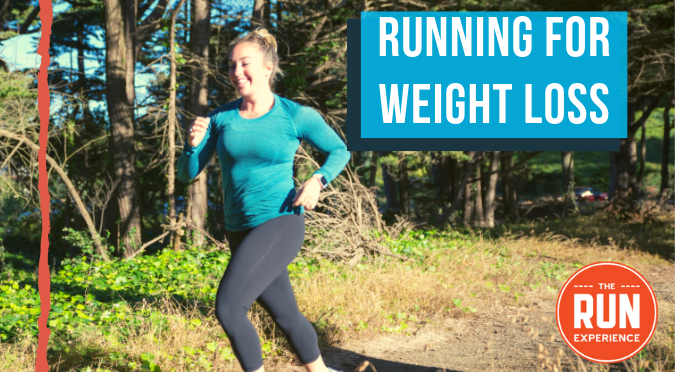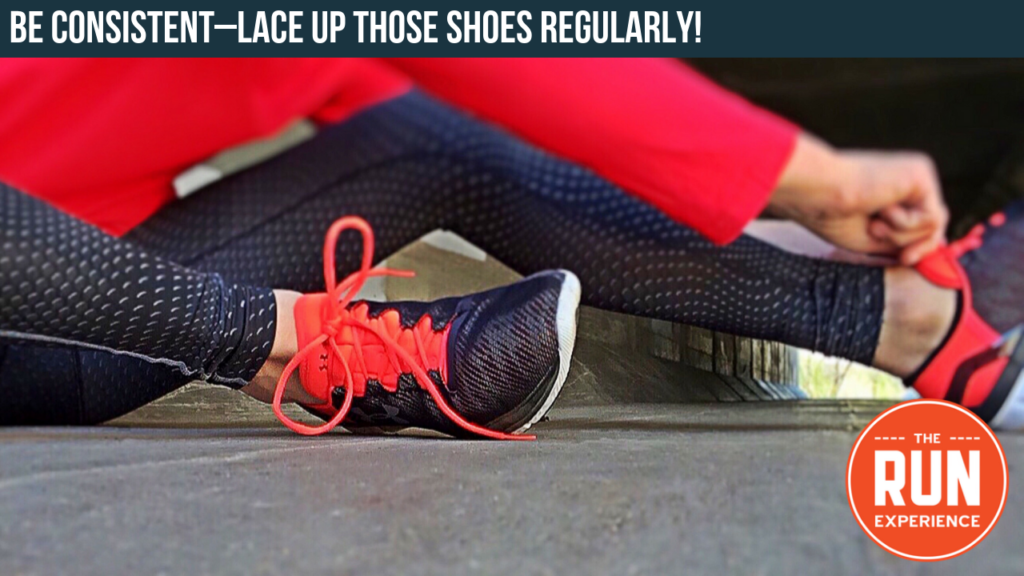Running to Lose Weight: 7+ Best Tactics to Lose Weight Fast
Running to lose weight is a high-intensity, cardio form of exercise that burns a high number of calories in a shorter amount of time than many other sports.

Many people lace up new running shoes with the main goal of weight loss at the start of their running journey—before they inevitably fall in love with the sport. And for good reason—running to lose weight is a high-intensity cardio form of exercise that burns a high number of calories in a shorter amount of time than many other sports.
Plus, if you’re running to lose weight, you’ll be burning body fat and building muscle mass, so it’s one of the best things you can do to raise your heart rate, burn calories, and reach your weight loss goals.
Is Losing Weight to Run Faster a Good Idea?
Embarking on a journey to shed pounds for the sake of running faster is a topic that merits a nuanced exploration. The relationship between weight loss and increased running speed isn't just a simple equation—it's a balance that involves health, efficiency, and sustainable training practices.
It's a basic principle of physics that carrying less weight can lead to increased efficiency in movement. In running, this translates to less energy expended per stride when your body has less mass to propel forward. This can, theoretically, translate into faster running times.
While the principle seems straightforward, the health implications are significant. Drastic or rapid weight loss, especially if not medically supervised, can lead to a host of issues including muscle loss, decreased bone density, hormonal imbalances, and a weakened immune system. It's crucial to approach weight loss in a healthy, controlled manner, focusing on body composition rather than just the number on the scale.
Balancing Weight Loss and Performance
There's a concept of an 'optimal racing weight': a weight at which a runner performs best. This varies greatly between individuals and depends on body composition, personal health, and running goals. It's not about being as light as possible but about finding a weight where you feel strong, energetic, and fast.
Losing weight should never compromise nutritional intake, especially when training intensively. A diet rich in lean proteins, complex carbohydrates, healthy fats, and ample vitamins and minerals is essential to support your running and overall health.
As you lose weight, it’s important to adjust your training regimen. Your body's needs and capabilities will evolve. Engaging in a balanced training program that includes endurance runs, speed workouts, strength training, and proper recovery is crucial.
Risks of Overemphasis on Weight
In the quest to improve running performance, it's easy to get caught up in the numbers game, especially when it comes to weight. While maintaining a healthy weight is important for runners, an overemphasis on weight can lead to a narrow focus that overshadows other crucial aspects of health and performance.
- Potential for Injury: Rapid weight loss or maintaining a weight that's too low for your body can increase the risk of injuries, as muscles and joints might be undernourished and more susceptible to damage.
- Mental Health: Fixating on weight can lead to unhealthy attitudes towards food and exercise, potentially leading to disorders like disordered eating or overtraining syndrome.
- Long-Term Sustainability: Extreme measures are rarely sustainable. Focusing on gradual improvements in both diet and exercise routines is more likely to result in long-term success in both running performance and overall health.
Running to Lose Weight: 7+ Ways to Make It Happen
Let’s tackle this one head-on.
1. Consistency and Moderation
It’s all about consistency and moderation. If you bust out of the gates sprinting on your first run excited about your new weight loss plan, you’re going to burn out quickly or get injured.

You need to have a plan–especially if you haven’t been working out or generally have a low activity level. It’s all about to change, but start slow and consider joining a running program for motivation and support from other runners in the same boat as you are.
If you’re just starting out, you should also incorporate rest days or cross-training. Running is an impact-heavy sport on your body, so make sure you mix it up with other sports like swimming, the elliptical, yoga, or pilates.
2. Examine Your Diet
Even if you’re running three to five times a week (or more), it’s still not a license to eat whatever you want. I’ve seen so many new runners get discouraged when they start running and start seeing the number on the scale creep up.
It can be tempting to put proper dietary habits aside because you feel like you “deserve” that big bowl of ice cream or plate of nachos, but it can sabotage your efforts.
Pro tip: Consider relying on measurements or how your clothes fit rather than the scale. Muscle weighs more, but it definitely helps your body burn more fat!
Consider this: an average five-mile run burns roughly 500 calories–depending on your size. A burger and fries, a milkshake, fried onion rings, or a massive sandwich can all easily come in WAY over 500 calories. Plus, it’s not going to make you feel good; it’s going to weigh you down!
Keep this mantra in mind–calories in, calories out. Yes, it’s still important to fuel your workouts and overall day with healthy eating such as lean protein, veggies, and fruits, but if you’re consuming more calories than you are burning, chances are you’re going to gain weight.

So, you should aim for a calorie deficit where you’re eating fewer calories than you’re burning. Consider keeping a food journal, using an app, or even consulting with a dietitian or nutritionist to help you track your calories burned vs. calories consumed. It takes a little practice–but it will make you super aware of where you’re allocating calories.
3. Incorporate Strength Training
Remember, muscle burns more than fat. So while hitting the trail or track burns mega calories, you should still incorporate some strength training to build up your muscle mass, making your runs even more productive if you’re running to lose weight.
Even if you aren’t big on lifting weights, you can still weave in a high-intensity interval training (HIIT) like this one to use your own bodyweight to become a stronger, fitter runner.
This workout incorporates four movements in just 15 minutes.
1. Jump Squats
- Start with your feet shoulder-width apart and point your toes out slightly.
- Sit back into the squat, keeping a flat back with your knees over your toes.
- Sit down into the squat for two seconds, and explode up for one second–landing nice and light on your toes.
- Make sure you don’t lock your knees–we’re going for a fluid movement from squat to jump and back.
- Aim for 15 jump squats per set–as many as you can fit in about three and a half minutes.
2. Russian Twists
- Sit on the floor with your knees in front of you, keeping a tall, flat back–without hunching forward.
- Lean back just a bit, balancing on your butt bone with your feet slightly off the ground.
- If you want an extra challenge, hold a medicine ball or weight in your hands.
- With your hands together (or a ball or weight in between them) touch your hands to your left side, come back and pause at center, and then touch them to the right side.
- If it starts getting too intense, you can touch your feet down to the ground, but keep bringing them back up slightly as you feel able.
- Aim for 30 total twists (15 per side) per set–as many as you can fit in about three and a half minutes.
3. Speed Skaters
- To start, stand up with your feet shoulder-width apart
- With your right foot, take a big set out to the side.
- Cross your opposite (left) leg over behind your right leg and sit back until you can feel a good stretch in your right hip.
- From here, tap your right hand down to the ground before moving to the other side.
- Bring your left leg back into the same stance you had at the beginning, but stay low.
- Keeping your hips nice and square, repeat on the other side.
- Alternate sides, adding a small jump in between each “skater” if you feel up to it.
- Aim for 30 total speed skaters (15 per side) per set–as many as you can fit in about three and a half minutes.
4. Burpee Challenge
- Stand with your feet just a bit over hip-width apart.
- Bend your knees slightly, making sure they stay right over your toes.
- Bend forward and put your hands to the ground in front of you, shoulder-width apart.
- Either step or jump back your feet while keeping your hands in place, extending the legs fully, ending in a tight plank position with your hips tucked under and your body in a straight line.
- Once your body is in that straight line, lower yourself down like you’re doing a push-up, keeping your elbows tight to your sides.
- When you come back up, you can take a wider stance to push up to your feet–making sure your knees aren’t going over the top of your toes.
- Raise your hands above your head, and repeat!
- Aim for 15 burpees per set–as many as you can fit in about three and a half minutes.
Are you ready for more workouts that can drive weight loss through running? Check out our “Running For Weight Loss” YouTube page dedicated to helping every runner reach their fitness and weight loss goals.
Running for Weight Loss FAQs
Does running help you to lose weight?
Yes, running does help you to lose weight. To lose weight, you’ll need to be in a caloric deficit. You enter a caloric deficit by eating less or exercising more. Running is the perfect way to satiate your appetite while also entering the caloric deficit necessary to lose weight.
Is running the best way to lose weight?
Not necessarily. There’s no one-size-fits-all method for weight loss. If running makes you miserable, then it’s likely not going to be the best way to lose weight. However, if you enjoy running and getting outside, then it’ll likely be a great method for weight loss.
Is running every day to lose weight a good idea?
The answer is a bit gray. Running every day to lose weight could put you in a constant caloric deficit, which could help with the weight loss—however, running every day could also increase your risk of injury. And an injury could halt your weight loss goals or even reverse them and cause weight gain.
Walking vs running to lose weight—which is better?
Walking doesn’t burn calories as fast as running, but it does lead to fewer injuries—so they both have different unique advantages.
Don’t look at it so much as walking vs running to lose weight—instead, utilize both. Use running on your training days, and take of advantage of low-intensity walking on your rest days.
How many miles should you run a day to lose weight?
There’s not a golden number of miles you need to run a day to lose weight. Your age, gender, fitness levels, health, and diet will play a large role in your weight loss, so don’t focus too much on the running. Yes, running helps, but you’ll need to take a holistic approach to lose weight for good rather than just for a season.
Should I do interval running to lose weight?
Yes! Interval training is a great way to combine aerobic and anaerobic exercise benefits into a single running workout. Plus, you burn more calories in a shorter period of time (and don’t forget the afterburn effect). However, don’t go overboard with the interval training. Use it as a smaller part of your broader running plan.
Will I run faster if I lose weight?
Experts have found that you can run about two seconds faster per mile for every pound that you lose. That can really add up if you think about shedding 10+ pounds and running long-distance races. However, there is a land of diminishing returns. It’s important to maintain a healthy weight balance to avoid injuries and illnesses that’ll completely halt your running progress.
The Bottom Line
Running to lose weight is like a marathon, not a sprint. It takes time, dedication, consistency, and proper nutrition. Don’t forget to check out our new mobile app for coaching advice, daily video workouts, injury prevention tips, and complete training programs.
You can even keep track of your runs with our GPS Run and receive community support. Think of it as your own personal running coach, right in your pocket. It’s available for download now on the iOS App Store and the Google Play Store.
